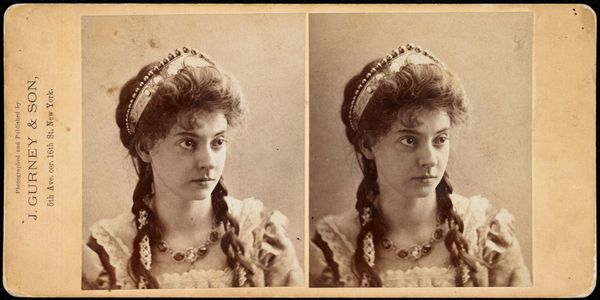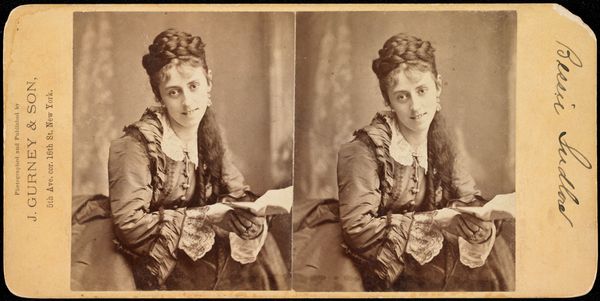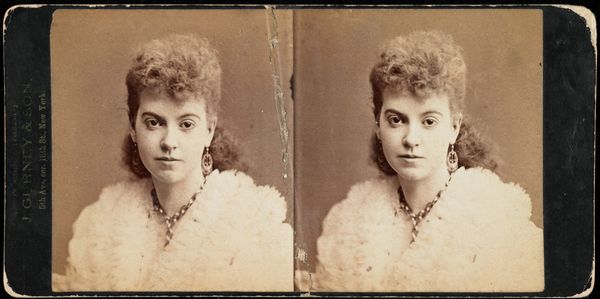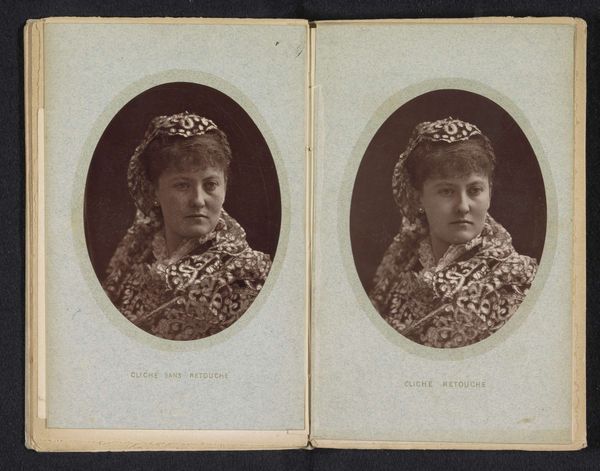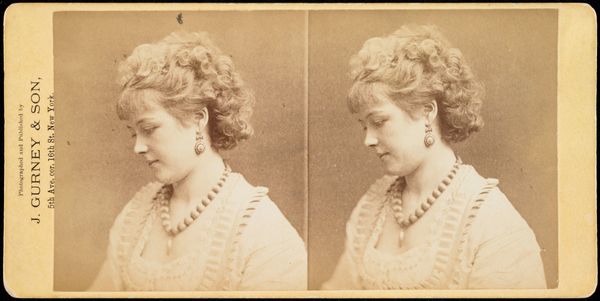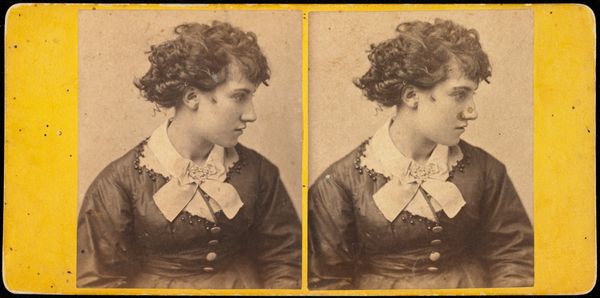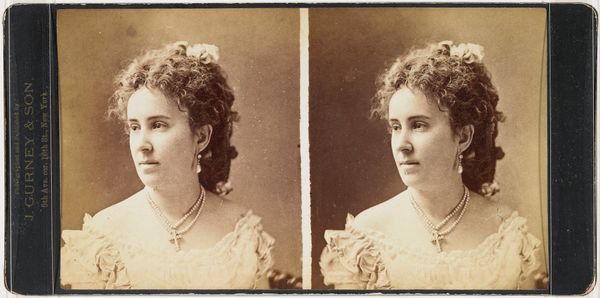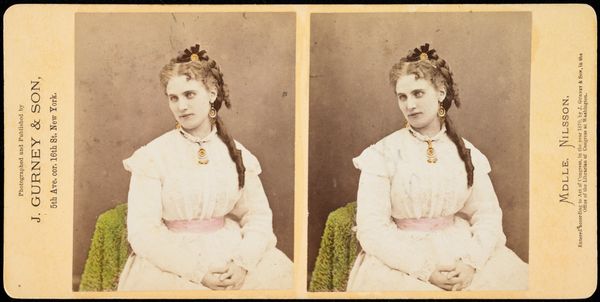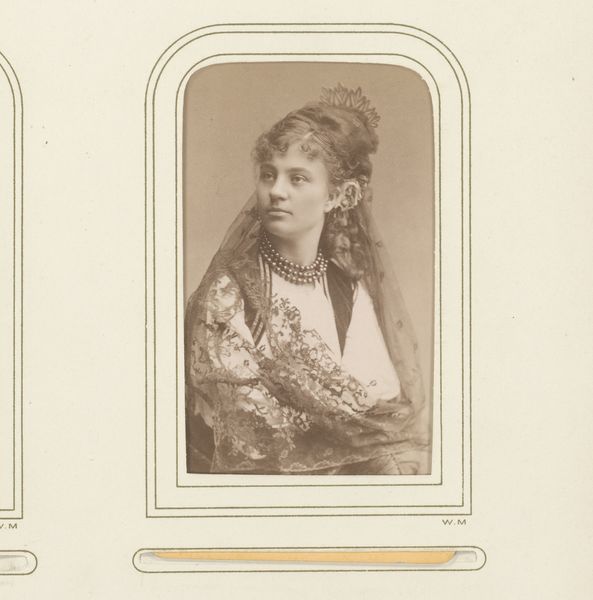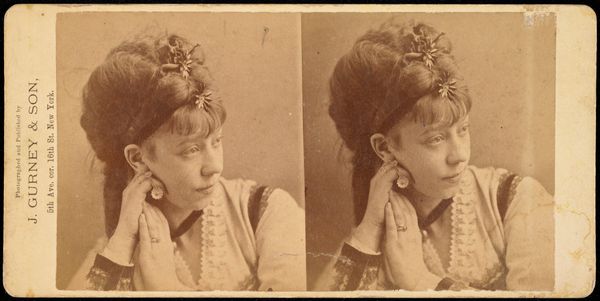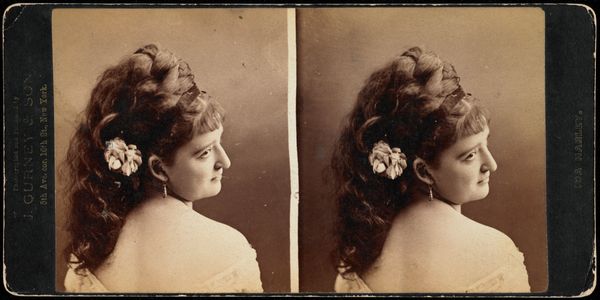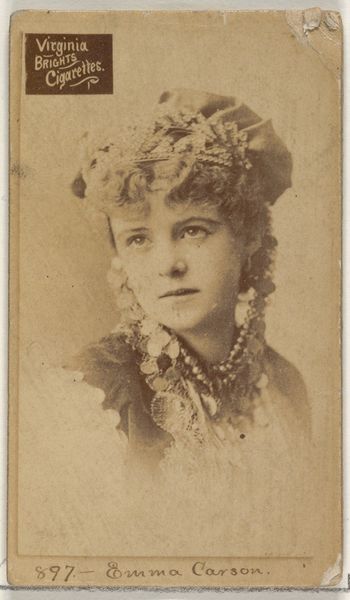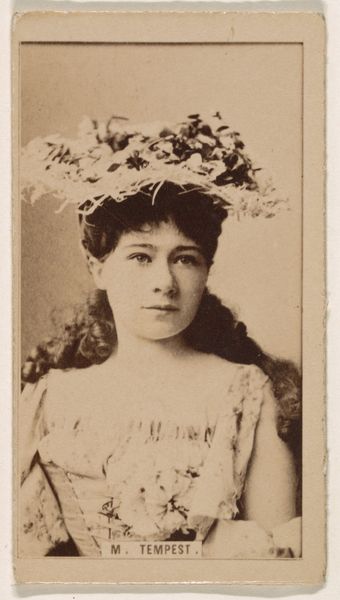
daguerreotype, photography
#
portrait
#
daguerreotype
#
photography
Dimensions: 3 1/4 x 2 9/16 in. (8.26 x 6.51 cm) (image, each)3 3/8 x 6 7/8 in. (8.57 x 17.46 cm) (mount)
Copyright: Public Domain
This stereograph was produced by Jeremiah Gurney & Son in New York sometime in the late 19th century. The stereograph was a popular form of entertainment and self-representation in the United States at this time, creating a doubled image that appeared three-dimensional when viewed through a special device. In the image, we see a young woman dressed in the height of fashion, adorned with an elaborate bonnet and jewelry. The composition is simple, focusing on her face and upper body. But the success of Gurney's studio was rooted in the burgeoning of consumer culture and the growing middle class in America. Photography allowed for the mass production of images, making portraiture accessible to a wider range of people beyond the traditional elite. To better understand the nuances of this work, we might turn to historical archives, fashion magazines, or studio records, to illuminate the cultural values and social dynamics that shaped its creation and reception. Art always exists in the realm of a particular social and institutional context.
Comments
minneapolisinstituteofart over 1 year ago
⋮
These photographs are examples of a stereograph created by Jeremiah Gurney. A stereograph is made up of two images next to each other on a page. Just like humans have two eyes, a stereoscopic camera has two lenses. The camera makes two pictures that look similar, but are taken from slightly different perspectives. Then, the pictures are placed into a stereoscope viewer (see an example displayed in the case), and the image that the eyes see is three-dimensional. This feature made them popular, although they were more expensive to purchase.
Join the conversation
Join millions of artists and users on Artera today and experience the ultimate creative platform.
